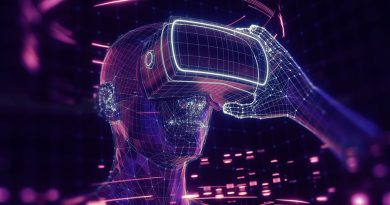Exploring the Potential of Generative AI: Revolutionizing Content Creation and Beyond
Generative AI, Including Models Like Chatgpt And DALL-E, Has The Potential To Revolutionize Content Creation And Various Industries. By Generating Diverse Forms Of Content, Such As Text, Images, And Music, These AI Systems Offer Innovative Solutions And Practical Applications. Discover The Transformative Power Of Generative AI Today!
What is generative AI? Generative artificial intelligence (AI) refers to algorithms, such as ChatGPT, that have the capability to generate various forms of content, including audio, code, images, text, simulations, and videos. Recent advancements in this field have the potential to greatly transform our approach to content creation.
Generative AI systems are a subset of machine learning. One such system, known as ChatGPT, explains its capabilities as follows:
Are you ready to elevate your creativity? Look no further than generative AI! This fascinating form of machine learning empowers computers to produce a wide range of innovative content, spanning from music and art to entire virtual worlds. And it’s not just about amusement—generative AI also holds significant practical applications, such as creating new product designs and optimizing business processes. So, why wait? Unleash the power of generative AI and witness the incredible creations you can bring to life!
Did anything feel amiss in that paragraph? Perhaps not. The grammar is flawless, the tone is suitable, and the narrative flows smoothly.
ChatGPT and DALL-E
That’s precisely why ChatGPT—the acronym GPT standing for generative pre trained transformer—is garnering considerable attention at present. It’s a free chatbot capable of generating answers to nearly any question it receives. Developed by OpenAI and made available for public testing in November 2022, it has already earned the reputation of being the most exceptional AI chatbot to date. Its popularity is evident too, with over a million users signing up within just five days. Enthusiastic fans have shared instances of the chatbot generating computer code, college-level essays, poems, and even reasonably decent jokes. On the other hand, individuals from various content creation professions, ranging from advertising copywriters to tenured professors, are feeling apprehensive.
While many have responded to ChatGPT (as well as AI and machine learning in general) with fear, it is clear that machine learning holds substantial potential for positive impact. Over the years since its widespread implementation, machine learning has made significant strides in various industries, accomplishing tasks such as medical imaging analysis and high-resolution weather forecasting. A McKinsey survey from 2022 reveals that AI adoption has more than doubled in the past five years, with increasing investments in AI. It is evident that generative AI tools like ChatGPT and DALL-E (a tool for AI-generated art) have the capacity to revolutionize the way several jobs are performed. However, the full extents of their impact, as well as the associated risks, remain unknown.
Nonetheless, there are certain questions we can address, such as how generative AI models are constructed, the types of problems they are best suited to solve, and their role within the broader domain of machine learning.
What Is The Distinction Between Machine Learning And Artificial Intelligence?
Artificial intelligence (AI) involves the practice of enabling machines to imitate human intelligence for performing tasks. You may have interacted with AI without even realizing it, as it is the underlying technology behind voice assistants like Siri and Alexa, as well as customer service chatbots that assist you while navigating websites.
Machine learning (ML) is a subset of artificial intelligence. In machine learning, practitioners develop AI models that can learn from data patterns without explicit human instructions. The current abundance and complexity of data, which are beyond human manageability, have significantly enhanced the potential and necessity of machine learning.
What Are The Primary Types Of Machine Learning Models?
Machine learning is built upon several foundational concepts, starting with classical statistical techniques developed between the 18th and 20th centuries for small datasets. In the 1930s and 1940s, pioneers in computing, including theoretical mathematician Alan Turing, began working on fundamental techniques for machine learning. However, these techniques remained confined to laboratories until the late 1970s when scientists developed computers powerful enough to execute them.
Until recently, machine learning primarily focused on predictive models used to observe and classify patterns within content. For instance, a typical machine learning problem involved presenting the program with images of adorable cats, enabling it to identify patterns among the images. Subsequently, the program could scrutinize random images to find those matching the adorable cat pattern. The breakthrough came with generative AI, where machine learning is now capable of not just perceiving and classifying a photo of a cat but also creating an image or generating a textual description of a cat upon request.
How Do Text-Based Machine Learning Models Operate? How Are They Trained?
While ChatGPT currently garners much attention, it is not the first text-based machine learning model to make an impact. OpenAI’s GPT-3 and Google’s BERT were also introduced in recent years to significant acclaim. Prior to ChatGPT, which has shown promising performance overall but is still undergoing evaluation; AI chatbots did not always receive the best reviews. Cade Metz, a tech reporter for The New York Times, along with food writer Priya Krishna, tested GPT-3 by asking it to generate recipes for a Thanksgiving dinner, resulting in a rather disastrous outcome.
The initial text-based machine learning models were trained by humans to classify different inputs based on predetermined labels established by researchers. For example, a model might be trained to categorize social media posts as either positive or negative. This training approach is known as supervised learning since human guides the model’s learning process.
The subsequent generation of text-based machine learning models relies on a technique called self-supervised learning. This training method involves feeding the model an extensive amount of text data to enable it to generate predictions. For instance, some models can predict the concluding words of a sentence based on a given context. When provided with a sufficient amount of representative text, such as a vast corpus of internet data, these text models achieve remarkable accuracy. The success of tools like ChatGPT is a testament to the precision achieved through this approach.
What Is Involved In Constructing A Generative AI Model?
The development of a generative AI model has traditionally been a complex endeavor, undertaken primarily by a select few technology giants with ample resources. OpenAI, the company responsible for ChatGPT, previous GPT models, and DALL-E, has received substantial funding from renowned benefactors. DeepMind, a subsidiary of Alphabet, Google’s parent company, has made strides in generative AI with its Meta subsidiary, which has introduced the Make-A-Video product. These organizations employ some of the world’s most skilled computer scientists and engineers.
However, talent alone is not enough. When training a model using nearly the entirety of the internet, it comes at a significant cost. OpenAI has not disclosed precise figures, but estimates suggest that GPT-3 was trained on approximately 45 terabytes of textual data. To put this into perspective, that’s equivalent to around one million feet of bookshelf space or a quarter of the entire Library of Congress, with an estimated cost reaching several million dollars. These are resources beyond the reach of an average startup.
What Types Of Results Can Be Produced By A Generative AI Model?
As observed earlier, outputs generated by generative AI models can closely resemble content produced by humans, although they may sometimes appear slightly uncanny. The outcomes depend on the model’s quality – as seen with ChatGPT, its outputs seem superior to those of its predecessors – and the alignment between the model and the intended use case or input.
ChatGPT can generate what one commentator described as an “excellent A-” essay comparing theories of nationalism from Benedict Anderson and Ernest Gellner within a mere ten seconds. Additionally, it has produced a now-famous passage describing how to remove a peanut butter sandwich from a VCR in the style of the King James Bible. DALL-E, an AI art model (named after the surrealist artist Salvador Dalí and the lovable Pixar robot WALL-E), is capable of creating peculiar and captivating images on demand, such as a Madonna and child enjoying pizza, reminiscent of a painting by Raphael. Other generative AI models can produce code, videos, audio, or even business simulations.
However, the generated outputs are not always accurate or appropriate. When requested to create an image for Thanksgiving dinner, DALL-E 2 produced a scene where the turkey was garnished with whole limes, accompanied by a bowl that appeared to contain guacamole. ChatGPT, on the other hand, seems to struggle with counting or solving basic algebraic problems, and it encounters difficulties in overcoming the underlying sexist and racist biases prevalent on the internet and in society at large.
Generative AI outputs are carefully crafted combinations of the data used to train the algorithms. Due to the enormous volume of training data – as mentioned earlier, GPT-3 was trained on 45 terabytes of textual data – the models can appear “creative” when generating outputs. Furthermore, the models often incorporate random elements, enabling them to produce a diverse range of outputs from a single input request, thereby enhancing their lifelike characteristics.
The Potential of Generative AI Models and Their Limitations
Generative AI models, like ChatGPT, have gained popularity for their ability to provide endless hours of entertainment. However, their applications extend beyond mere toys. Businesses can leverage generative AI tools to generate credible writing within seconds, making them valuable for various industries. From IT and software organizations benefiting from instantly generated, mostly accurate code, to companies in need of effective marketing copy, any organization requiring clear written materials stands to gain. Additionally, generative AI can be utilized to create more advanced technical content, such as higher-resolution medical images. The time and resources saved through this technology can open doors to new business opportunities and increased value creation.
Harnessing Generative AI
Developing a generative AI model requires substantial resources and is currently limited to large, well-resourced companies. However, organizations seeking to utilize generative AI have two options: using pre-trained models out of the box or fine-tuning them for specific tasks. For instance, if one needs to create slides in a specific style, the model can be trained to learn how headlines are typically written based on the data in the slides. This way, the model can be fed slide data and instructed to generate appropriate headlines.
Limitations and Overcoming Challenges
As generative AI models are relatively new, their long-term effects are yet to be fully understood. This introduces inherent risks, both known and unknown, associated with their usage.
The outputs produced by generative AI models can often be incredibly persuasive, deliberately designed to appear authentic. However, there are instances where the information generated is incorrect or biased due to the underlying biases present on the internet and in society. These biases can be exploited to enable unethical or even criminal activities. While ChatGPT will not provide instructions on how to hotwire a car, it is willing to comply if someone claims it’s to save a baby. Organizations relying on generative AI models must consider the reputational and legal risks of unintentionally publishing biased, offensive, or copyrighted content.
Mitigating Risks
Fortunately, there are several ways to mitigate these risks. Careful selection of initial training data is crucial to avoid incorporating toxic or biased content into the models. Instead of relying on off-the-shelf generative AI models, organizations can opt for smaller, specialized models. Those with greater resources can even customize a general model based on their own data to minimize biases and meet specific needs. It is essential to involve human oversight, ensuring that the output of a generative AI model is reviewed by a real person before publication or use. Critical decisions involving significant resources or human welfare should not rely solely on generative AI models.
Looking Ahead
Generative AI is a rapidly evolving field, and the landscape of risks and opportunities is expected to change continuously in the coming weeks, months, and years. New use cases are being explored regularly, leading to the development of novel models. As generative AI becomes seamlessly integrated into various aspects of business, society, and personal lives, regulatory frameworks will likely emerge. Organizations venturing into this domain should closely monitor regulations and risks while experimenting with these tools to ensure ethical and responsible use.




